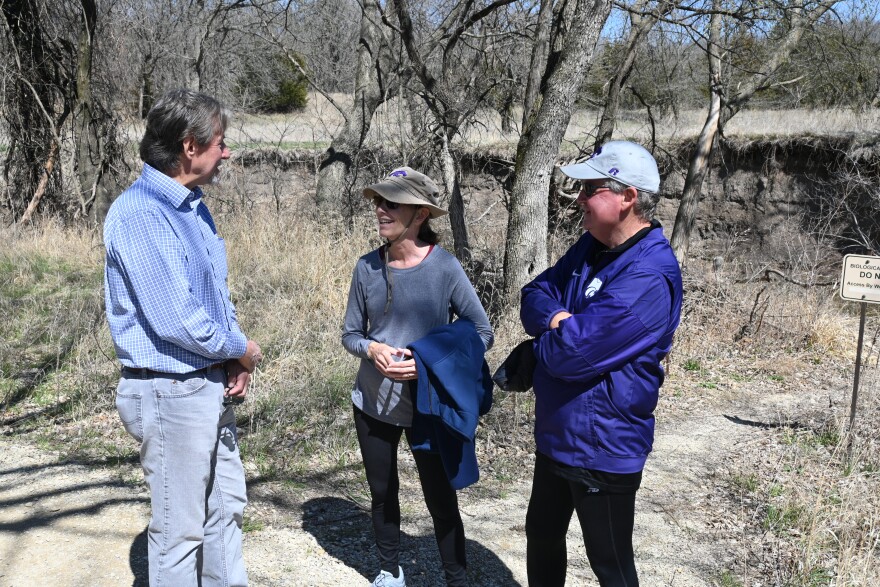The tallgrass prairie once covered more than 170 million acres across North America.
Today, only about 4% is left, and most of it can be found in the Flint Hills of Kansas.
Safeguarding the remaining prairie is the mission behind the Konza Prairie Biological Station, which is about 6 miles south of Manhattan.

Researchers at the station study how the prairie functions.
“How can we learn about prairies in a way that will let us conserve them so that the natural resources and the biodiversity they provide will be available for future generations?” said John Blair, a biology professor at Kansas State University and director of station.
Blair said there are dozens of experiments taking place at all times on the prairie’s 8,600 acres. Most of the prairie has been converted to agricultural use and has disappeared. The researchers, through these experiments, are learning how to rebuild it.
Some research has been conducted for decades.
“For example, our long-term fire experiments, which now span 40 years, have provided really important insights in terms of how the prairie changes under different fire regimes,” Blair said.

Landowners in the Flint Hills burn the prairie to kill old plant growth and replenish the soil. Fire also burns off invasive species that can take over, such as red cedars and dwarf dogwoods.
Access to the station is limited to researchers. But next to it is a public hiking trail, nearly 7 miles long, that travels from tree-lined creeks to the tops of the hills.

The path winds through lower fields and over bridges across King’s Creek. Blair says between 30,000 and 40,000 people visit annually.
On this particular day, there were a range of people using the trail: serious hikers with boots and backpacks, families with young children and people of all ages.
Blair said area residents are passionate about preserving the prairie and the work being done at the station. That would include Judy and Fred Works, members of the Friends of the Konza Prairie support group, who were hiking the trail.

“We got introduced to it when our kids were really little and just thought this place, there's so much that people don't know that's going on with the research,” Judy Works said.
“It's really great.”
Even with all the people along the trail, Blair said there are times when you can feel alone on the prairie.
“Depending on the time of day and how many people are out here, you can see deer, wild turkeys, lots of bird species in the lower areas,” he said.
The path eventually begins to head up from the lower areas, leaving the trees and climbing into hills. Every so often there are markers; an online trail guide explains what hikers are looking at.

When you reach the top, the hills stretch out ahead, the grass blowing in the gusty wind. Burned areas of the Flint Hills are visible, with limestone layers peeking through the black soil.
In other directions is the bright green of winter wheat in distant fields.
Blair said he is happy to see the visitors engaging with nature, but hopes they take away something deeper.
“I know many people come out for exercise or just to be in the outdoors,” he said. “But what they’ll notice along the way is there’s incredible biodiversity out here, and there’s a sense of peacefulness, of belonging, that I think it's more difficult to find in a more urban and developed setting.”
A wildflower walk along the trail is scheduled for June. Information about other events and the Konza Prairie Biological Station is available on its website.



